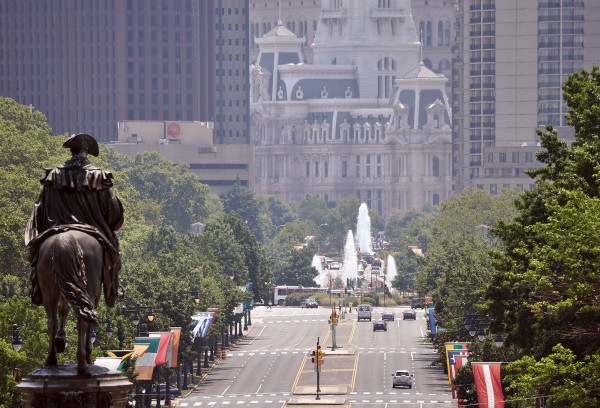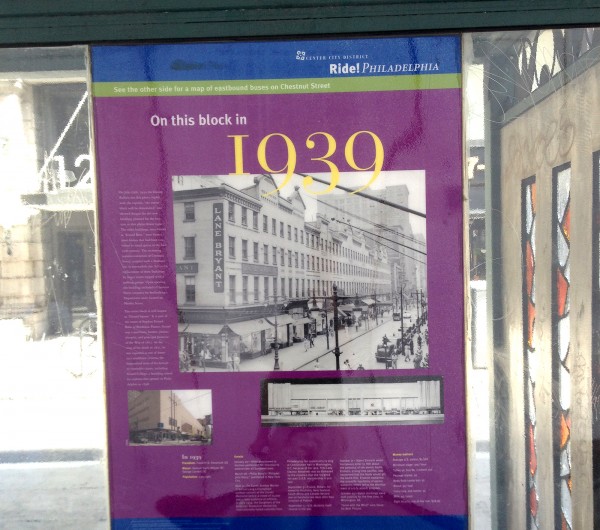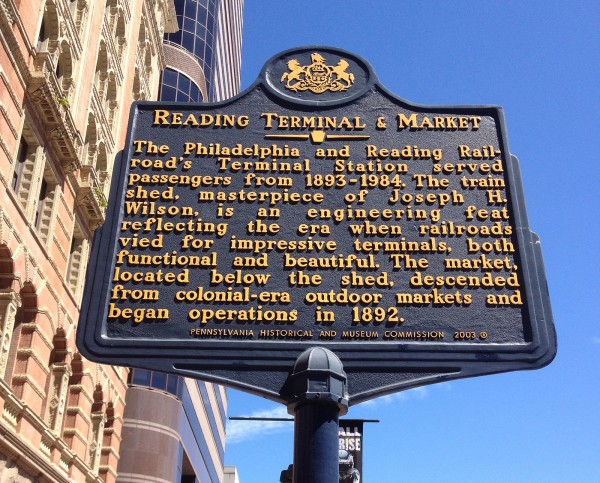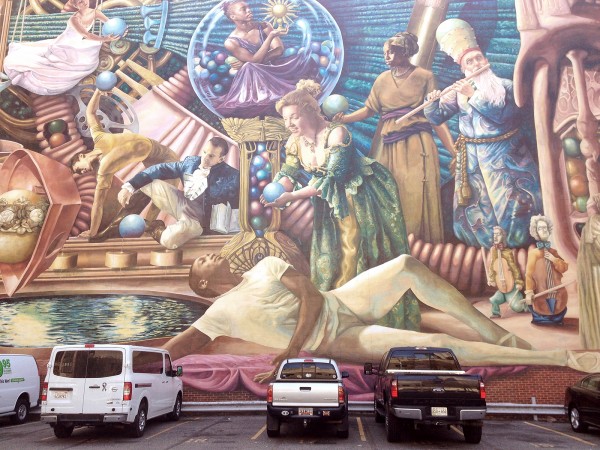Among North American cities, few can boast the depth of history that’s on offer in Philadelphia. The compact downtown, plotted out by William Penn in the late 1600s, has buildings and districts that date back to the 18th century, but it’s also clear that the core has continued to attract office, hotel, and condo development.
After exploring Philadelphia over a long weekend in August, I was struck by the fact that the city has managed to sustain both the old and the new in a curious balance that feels both European and American all at the same time. Historical designation regulations didn’t scare off investment, while ham-fisted, large-footprint development (of which there’s no shortage) hasn’t steamrollered over those areas worth preserving.
The city, not surprisingly, is obviously proud of both its past and its public spaces, and not just the bucket-list American Revolution sites. Toronto, I’d say, should look to Philly for some smart lessons about marking urban cultural heritage.
Transit shelter history
Development needn’t strangle historical awareness. On bus shelters throughout the core, the City Centre District, Philadelphia’s downtown BIA, has created a series of two-sided posters. One side has a transit map, and the other, facing the sidewalk, shows a photo of a historic building that was located in the block where the shelter is situated, as well as a blurb about the structure. “The historical interpretive panels focus on urban planning and development in Philadelphia from the earliest days of America’s history to current day,” says the program description. The project was funded by a federal highway agency. Smart.
Pedestrian signage/wayfinding
Without revisiting the fiasco of Toronto’s information pillars, I’d say the city could take a lesson from the striking simplicity of Philadelphia’s pedestrian wayfinding tools, which are visible here. Conceived as part of a $26 million streetscape improvement project in 1995, the city’s tourist/historical wayfinding tools are easily understood, generously distributed, and highly visible. The branding — Walk! Philadelphia — is smart, and none of it feels over-thought. The markers do what a pedestrian needs them to do, which is show the way. (The city also claims they comprise North America’s largest “comprehensive street signage system.”)
After three years of consultations and planning in the run-up to the Pan Am/Parapan Games, the City of Toronto in June launched a new wayfinding pilot project in the core. Philly’s approach is referenced in the consultant’s report as a potential model, but we’re still stuck — as always! — at the who-pays question.
Historical plaques
I know many people find them stuffy, but some sites simply warrant that kind of treatment. Philadelphia, moreover, takes a generous approach to what merits a plaque – not just top-10 tourist sites, but places that merit only an interesting or extended footnote in the city’s narrative – for example, one outside the building that housed America’s first fire insurance company, which had been established by Ben Franklin. Now think about this: Toronto doesn’t even have a historical plaque at the site of the first colonial legislative assembly (it was just east of the CBC building, on the north side of Front Street). Heritage Toronto does what it can, but money is a perennial issue. As with wayfinding, we don’t believe that telling our stories is a core civic responsibility, with the result that Toronto, despite its rich history, continues to suffer from a form of self-inflicted amnesia.
Making the most of murals (and public art)
Philadelphia’s mural arts program, launched 30 years ago as a gang-intervention/graffiti reduction strategy, has grown over the years into an impressive cultural force. The city now claims to have about 4,000 murals, as well as hundreds of works of public art, and also goes to some lengths to curate and showcase these works through events, guided walking tours, and a partnership with the Pennsylvania Academy of Fine Arts, Philly’s version of OCADU.
The City of Toronto’s relatively new mural program, StreetARToronto, has made commendable progress in recent years, and not just in the core. We could and should do more to showcase, promote and explain the city’s growing collection of street art (as well as the works commissioned through the city’s public art program). I was also struck by the clarity of purpose that frame’s Philadelphia’s mural efforts. “Bureaucracy has its place,” as the mission statement says, “just not in our mindset.”
Here, bureaucracy continues to define and circumscribe the exercise. The StreetARToronto homepage features a link to the graffiti by-law. Philly’s MuralArts.org starts with the art, and the artists who produce it.
top photo by Peter Miller; all other photos by John Lorinc










3 comments
The City of Toronto can start by getting rid of the weeds growing out of the sidewalks. My residential neighbourhood, and others, have the weeds looking like bushes.
In addition, I have only seen a streetswiper go down my neighbourhood streets only once this year, in the early spring. Used to see them go once a month, nowadays it seems like once a year.
Do you people have any idea how bad urban decay still is around Philly? Obviously not! Then directly across the Delaware river from downtown Philly it gets much worse in Camden NJ which is literally the worst place in America, the Camden police department actually closed down. The second most dangerous place in America is Chester PA right next to Philadelphia International Airport. Learn to appreciate what you’ve got and how hard is it to erect a dedication to Upper Canada’s first purpose built Parliament buildings? You must really hate yourselves to not even acknowledge Toronto’s late 18 century history, such petty hateful regional jealous banter. I find it truly tedious to have to listen to you all endlessly jabber about how much better everywhere else in Canada is and that Toronto isn’t worthy of the Olympics, it’s really cowardly, stand up for yourselves! By the way everywhere else in Canada isn’t better, there’s a reason why Toronto’s Canada’s most visited city and that’s a fact, deal with it!
B Fi —
Obviously you have no idea what Spacing is about if you’re writing such nonsense. Spacing is one of the city’s biggest boosters.
Yes, Philly has lots of horrible elements that Toronto doesn’t have. But also acknowledging that there are good things in other cities that Toronto can learn from is not a sign of weakness, but of openness and a willingness to bring the best practices found from around the world to our city.
So, before spouting off that Spacing and John Lorinc somehow hates Toronto you may want to get a better understanding of what this magazine and web site is all about.